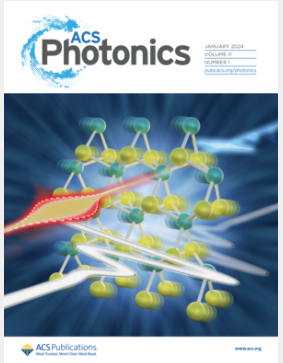Dark Excitons and Hot Electrons Modulate Exciton-Photon Strong Coupling in Metal–Organic Optical Microcavities
IF 6.5
1区 物理与天体物理
Q1 MATERIALS SCIENCE, MULTIDISCIPLINARY
引用次数: 0
Abstract
Polaritons, formed as a result of strong hybridization of matter with light, are promising for important applications, including organic solar cells, optical logic gates, and qubits. Owing to the large binding energies of Frenkel excitons (matter), strong matter–light coupling phenomena are possible at room temperature, high exciton densities, and even with low-quality factor microcavities. In such cases, because of the high degree of delocalization of polaritons, simultaneous effects from dark excitons and hot electrons may affect the performance of potential devices. Their understanding, therefore, is of high importance, but their disentanglement in optical spectroscopy has thus far remained unattainable. Here, we overcome this challenge by careful and systematic analysis of transient polaritonic spectra, supported by analytical models. In doing so, we conclude that dark excitons affect the strength of exciton–photon coupling and manifest themselves as Fano-like polaritonic gain-loss spectra. Free electrons add an additional loss component and imprint two-temperature dynamics on the polaritonic response. The general methodology developed can be applied to a variety of other microcavity structures. Our findings are significant for distinguishing polaritons and other excitations in studies of polariton–electron and plasmon–electron coupling phenomena, as well as photonic control over photophysical and photochemical processes.

暗激子和热电子调制金属-有机光学微腔中的激子-光子强耦合
极化子是由物质与光的强杂化而形成的,在有机太阳能电池、光学逻辑门和量子比特等重要应用领域都很有前景。由于Frenkel激子(物质)的结合能大,在室温、高激子密度,甚至低质量因子微腔条件下,都有可能出现强的物质-光耦合现象。在这种情况下,由于极化子的高度离域,暗激子和热电子的同时作用可能会影响潜在器件的性能。因此,对它们的理解是非常重要的,但迄今为止,在光谱学中解开它们的纠缠仍然是不可能的。在这里,我们通过分析模型支持的瞬态极化谱的仔细和系统的分析来克服这一挑战。在此过程中,我们得出结论,暗激子影响激子-光子耦合的强度,并表现为类似法诺的极化激子增益-损失谱。自由电子增加了额外的损耗分量,并在极化响应上刻印了双温动力学。所开发的一般方法可应用于各种其他微腔结构。我们的发现对于区分极化子和其他激振,研究极化子-电子和等离子体-电子耦合现象,以及光子对光物理和光化学过程的控制具有重要意义。
本文章由计算机程序翻译,如有差异,请以英文原文为准。
求助全文
约1分钟内获得全文
求助全文
来源期刊

ACS Photonics
NANOSCIENCE & NANOTECHNOLOGY-MATERIALS SCIENCE, MULTIDISCIPLINARY
CiteScore
11.90
自引率
5.70%
发文量
438
审稿时长
2.3 months
期刊介绍:
Published as soon as accepted and summarized in monthly issues, ACS Photonics will publish Research Articles, Letters, Perspectives, and Reviews, to encompass the full scope of published research in this field.
 求助内容:
求助内容: 应助结果提醒方式:
应助结果提醒方式:


